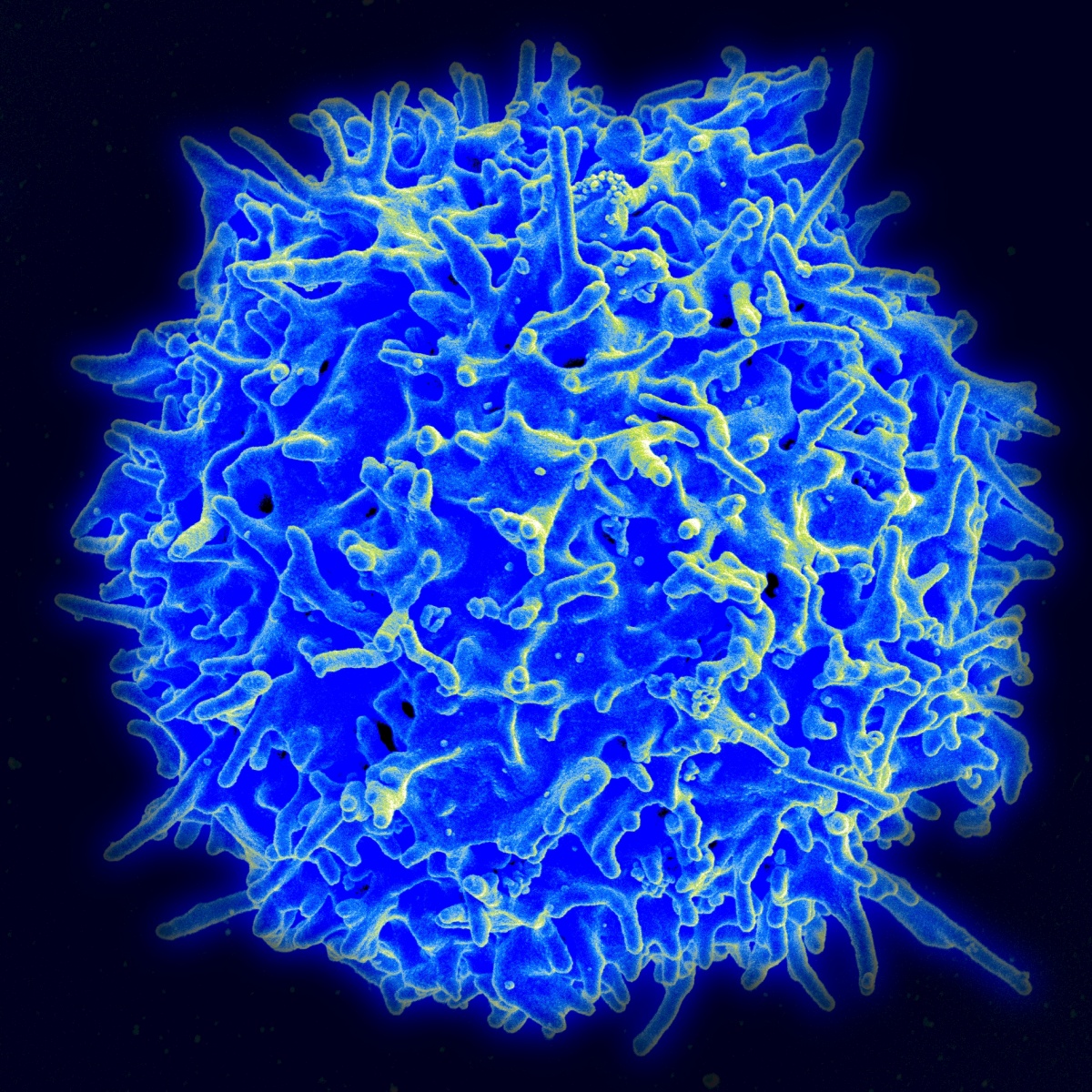"Personally what I like most about this project is the communication and interaction between the researchers, the different views on the same topic," says Fabian Schwerdtfeger, PhD student at RUMC Nijmegen. Schwerdtfeger studied biochemistry and biophysics in Germany, but this was 'too chemical' for him. He found a PhD position in Nijmegen at the RUMC in immunology, in a group with a lot of expertise in microscopy. "The project combines cell biology with immunology and advanced microscopy which I find quite nice."
His research partner Elisa Lamottke, working in the structural biology group at Utrecht University, finished a Master's in biochemistry in Germany. She was interested in a PhD abroad using the microscopic technique cryo-EM. "With cryo-EM you can create a 3D model of proteins without having to crystallize them first, which is tricky."
A new protocol
This is exactly what Lamottke does now to elucidate the structure and function of tetraspanins. Tetraspanins are transmembrane proteins folded four times through the cellular membrane. They are key players in organizing the membrane and in immune cell function such as fighting tumors. But how tetraspanins do that remains an important question. Both PhD students follow their own strategy towards answers.
Lamottke explains: "I developed a protocol to purify tetraspanins inside a membrane environment and then prepare them for cryo-EM analysis. The standard protocol replaces the membrane with a bilayer, but this is not a relevant biological environment. I am proud of this success, and I'm working to improve the protocol."
Schwerdtfeger's research has two distinct parts. One part focuses on understanding the function of two new tetraspanins (Tspan3 and Tspan13) in immune cells. The antibodies against these tetraspanins that he needed for the study were not readily available. "Elisa produced the essential proteins for our project in a great cooperation."
Unknown interactions
Schwerdtfeger found that both tetraspanins are highly expressed by human B cells, as compared to T cells. These two immune cell types resemble each other, so the difference must have a reason, he explains. "We investigated this by immunoprecipitation, where we isolate a protein complex by binding it to a bead covered in antibodies for this particular protein. From this we found previously unknown interactions for both tetraspanins."
In addition, Schwerdtfeger uses a super resolution microscope to image proteins with a resolution of 20 nm. He can observe clusters of the tetraspanins of interest and draw conclusions about the interactions the protein has with other molecules. The results are promising but it is still early days, he says. "The idea is, if we can see how the protein is organized we may be able to predict how, for example, antibodies can be used to treat cancer."
The teams have regular meetings where they present their results and discuss where they can help each other out. A great advantage, say both young researchers. "It is interesting to get a different view on the same subject," says Lamottke. "They work with entire cells, I work with isolated proteins. Fabian can use our results to see if they are relevant in cells, that will be very interesting."
PhD project
The chemistry of complement-tetraspanin interactions during host defense
PhD students
Elisa Lamottke
Structural Biochemistry, Utrecht University
Piet Gros group
Fabian Schwerdtfeger
Tumor Immunology, RadboudUMC Nijmegen
Annemiek van Spriel group
This interview was published in ICI Bulletin issue 14, december 2022.
